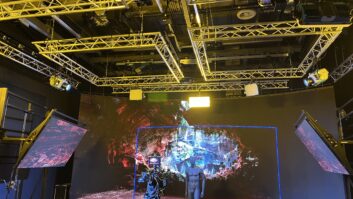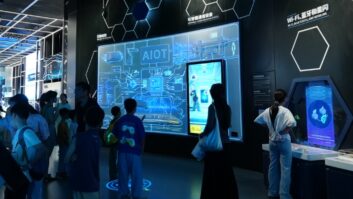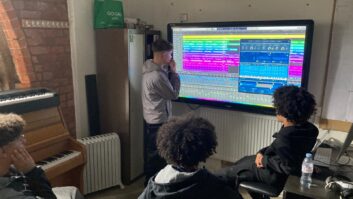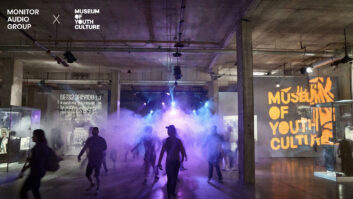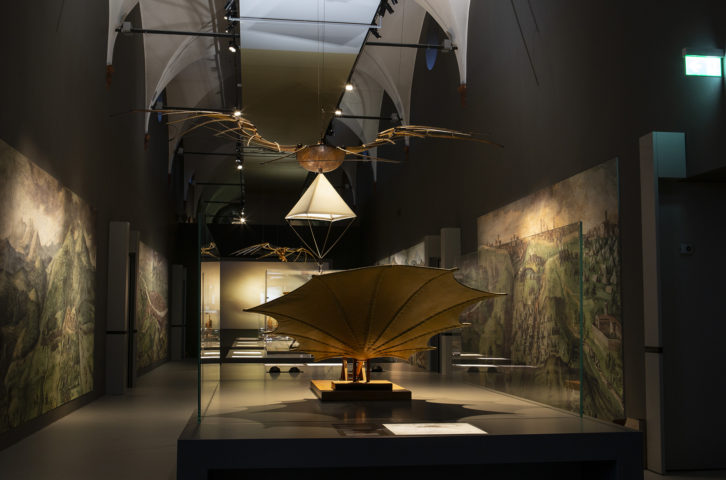
Following a four-year upgrade, in December 2019, the year of the 500th anniversary of Leonardo da Vinci’s death, Milan’s National Museum of Science and Technology (MUST) opened its New Leonardo Galleries. It is the world’s largest permanent exhibition dedicated to the global cultural icon, offering the public an updated reading of his character, presenting the truly unique and innovative elements of his thought.
Since 1953, when it was originally opened, the Museum has told this extraordinary story to visitors from all over the world, attracted by the fascinating genius. In the last 15 years Leonardo was at the centre of initiatives involving all kinds of audiences: travelling exhibitions, conferences, publications and educational activities.
The New Galleries’ impressive exhibition was designed by French scenographer and architect François Confino with Studio LLTT, and the galleries’ high-impact multimedia aspects by Neo (Narrative Environments Operas) and MYBOSSWAS, all with the Museum’s specialists.
Circle of characters
Confino states: “Leonardo da Vinci is one of the restricted circle of characters we tend to describe as “universal”, like Mozart, Einstein and maybe Chaplin. This was the understanding – and the challenge – with which we began our work with the Museum, to totally redesign the historic exhibition dedicated to Leonardo da Vinci. The collection preserves many models created in the 1950s to translate Da Vinci’s drawings into three-dimensional items. This starting point inspired the idea of making these extraordinary designs come to life using large video projections, immersing the public in a deep emotionally intense visit.”
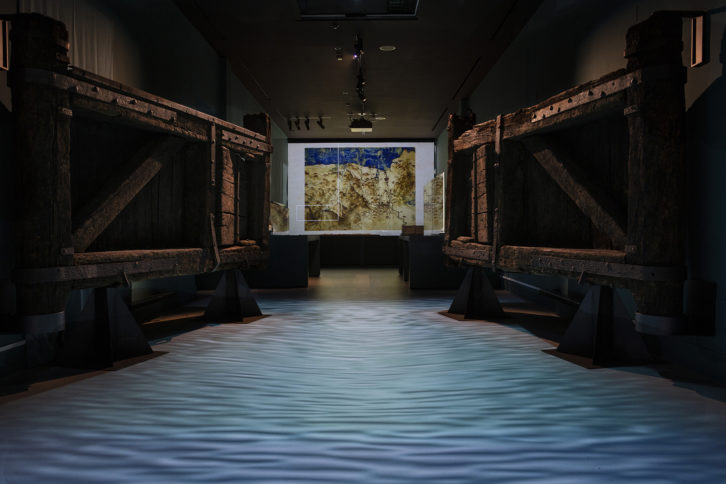
As well as the cultural support of over 70 prestigious institutions, including the Royal Collection Trust of Windsor and l’Institut de France in Paris, the Galleries (curated by Claudio Giorgione) also has technical partners of the calibre of Sony, Erco and Prysmian Group.
A spectacular setting accompanies visitors on a journey starting from the Florence of the 15th century that traces Da Vinci’s training and the influence of Tuscan engineers up to his stay in the Milan of the Sforza. A journey through the art of war, work and production, flight, anatomy, waterways and architecture that ends with a perspective on Da Vinci’s influence on Lombard Renaissance painting and an immersive installation dedicated to drawings of the last period of his activity.
The leitmotif of the new layout is both chronological and thematic and involves over 170 exhibited works (70 models and historical reconstructions, 33 naturalias, 18 antique volumes, 17 casts, 14 frescoes and paintings, six ancient artefacts, 13 historical facsimiles) with 39 multimedia installations accompanying visitors and presenting ideas, knowledge and dreams that characterise the thought of Da Vinci and the Renaissance.
The Museum is housed in a 16th century Olivetan monastery, so the architectural structure imposed a careful selection and placement of the exhibition’s historical objects, some of which are of considerable size.
Tech integration
The company with the unenviable task of integrating the impressive array of AVL technology in an unobtrusive manner into the galleries was Ephon Communication. The AV design was by Michel Helson (Realisationeurope from Lussan, France) in collaboration with Francois Confino (Alphabeth sarl) and Marida Cravetto and Federica Pagella (founders of Turin architecture studio Studio LLTT). The executive design was realised by Euphon Communication based on the pre-existing design.
The extensive multimedia set-up was developed with the help of 36 Sony laser projectors (VPL-FHZ120L, VPL-FHZ58L and VPL-FHZ66L models), equipped with optics suitable for the various sections.
Prysmian donated approximately 20,000m of various types of cable to the museum for the installation (Afumex low-voltage, fire-rated with low toxic fume emission, PVC, copper and optical fibre cables).
Euphon project manager Luca Biselli explains: “As far as the choice of brands and models of the hardware installed was concerned, each decision was taken with the artistic management (by Cravetto and Pagella), works management by Tatiana Milone (EOS Consulting) and Claudio Mazzucchelli (CM srl for EOS Consulting) and the museum staff.”
You may also be interested in:
- End-to-end audio at International Convention Centre Wales
- Christie Crimson laser projection powers DOOH advertising projects in Seville
The first room, dedicated to everyday life at the time of Da Vinci, was transformed into a street of a Renaissance Tuscan city and three niches give visitors the feel of being in Da Vinci’s Florence, as they feature projections in which three characters tell visitors their stories: Da Vinci’s maid, a cloth merchant and a young apprentice of the workshop of sculptor and painter Andrea del Verrocchio, where Leonardo trained. Each person is projected by a Sony FHZ66 with VPLL3003 lens, and their ‘talk’ with visitors is heard thanks to Yamaha VXL1B8 loudspeakers.
Maximum intelligibility
Biselli continues: “The most complicated section as far as sound reproduction was concerned was the central section, ‘Artists and engineers?’, where four different audio tracks are played back, often simultaneously. Maximum intelligibility was ensured in each work’s ideal listening point, in spite of inevitable overlapping, thanks to Yamaha’s slim VXL1B8 arrays’ well-controlled coverage area and excellent projection.”
Cornered Audio C5 speakers were deployed in other sections to meet both aesthetic and functional requirements, as they were able to be positioned between the ceiling and the projections. The excellent quality of the speakers also enabled good intelligibility even in rooms with more than one projection. RCF DP1420EN sound projectors met audio requirements in another section of the galleries.
Exclusive approach
As far as lighting is concerned, the 200 ERCO fixtures installed were various models (6, 12, 18, and 24W) of the Luedenscheid-based German manufacturer’s range of compact track-mounted Parscan LED fixtures, with warm (3000°K) and neutral white (4000°K) light, some fitted with snoot and honeycomb accessories. Narrow Spot, Spot, flood, wide flood and wall washer lens options are used, as well as Spherolit oval flood lenses with 360° rotation.
Michele Cascio of ERCO Illuminazione explains: “Each museum installation requires an exclusive approach, but the Leonardo Galleries are truly unique within the category, as they combine paintings, manuscripts, scale architectural models, and large machines, as well as a multi-sensory visitor experience, all in a single permanent exhibition.”
As well as the Erco fixtures, illumination is also courtesy of over 120 ProLights Minieclipse profile fixtures by Italian manufacturer Music & Lights, installed in 11 of the rooms, with five different projection angles (19, 26, 36 and 50°) and CREE White TU (Tungsten) 3100K 28W LED light sources.
In the presence of such a large number of extremely varied exhibits that enable visitors to realise the polyhedral genius of Leonardo, choosing the highlights is no easy job, but these must include the hall dedicated to the Art of War, which features a large projection on both walls reproducing Da Vinci’s drawings, used as the background to display models related to ballistic and military studies, including the famous giant crossbow, placed inside a diorama representing battle scenes.
Then there’s ‘The dream of flight’ section, where one sees how Leonardo transformed the birds’ anatomy into machine form, using pulleys, gears, and endless screw and bolt systems, and his drawings of these impeccably illuminated fantastic machines make a powerful impression.
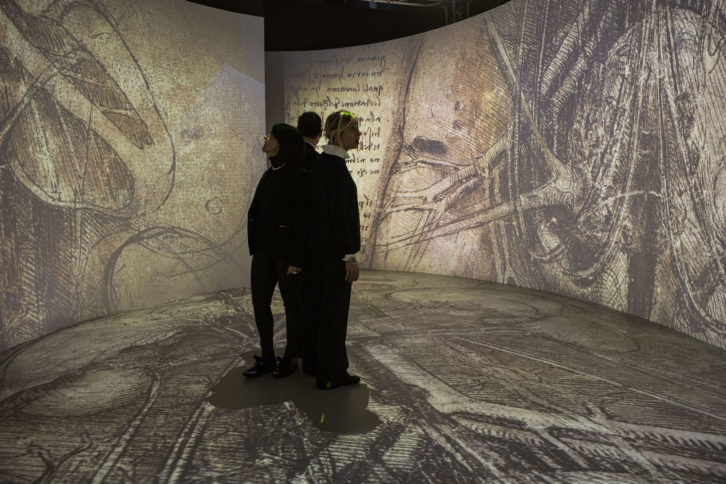
Then Leonardo’s studies and analyses of the human body as the most perfect of all machines, often utilising techniques appropriate for architectural drawings to represent it. To fill the section with notes and drawings by Leonardo of “The cardiovascular system and principal organs of a woman” (courtesy of the Royal Collection), nine Sony FHZ66 are deployed, with playout from six Watchout Players and the audio from eight Yamaha VXS8 enclosures and six VXS10S subwoofers.
Study and curiosity
In the ‘Waterways’ section it is shown how for Leonardo, the vivacity of the Lombard school of hydraulics was a source of study and curiosity and an extremely important educational experience during his Milan years. Here visitors can literally walk on the waters, thanks to six Watchout players feeding three Sony FHZ66 projectors with VPLL3007 lenses projecting on the floor, and audio is courtesy of two Yamaha VXL1B824 enclosures and a VXS10S subwoofer.
The conclusion of the journey, which helps discover Da Vinci’s multi-faceted life and works, is entrusted to a large immersive installation, ‘Man and the Cosmos’, based on multiple projections of drawings by Da Vinci, who in the last years of his life devoted himself to formulate wide-ranging theories about nature.
Fabio Mazzurana, corporate and education channel account manager, Sony Professional enthuses: “Sony is once again the protagonist of a museum installation. The New Leonardo da Vinci Galleries have international visibility and being a partner fills us with pride. We used our skills, resources and technological innovations, with which our projectors are permeated, to help visitors experience the exhibition in a truly unforgettable way.”
www.cm-srl.net
www.confino.com/en/home
www.cornered.dk/
www.dataton.com
www.erco.com/en
www.ggroupinternational.com/euphon-m54
www.museoscienza.org/en
www.mybosswas.it
www.neo.mi.it/
www.prolights.it/
www.prysmiangroup.com/en
www.rcf.it/
http://realisationseurope.com/
https://pro.sony/en_HR/
http://studiolltt.it/
https://uk.yamaha.com/

